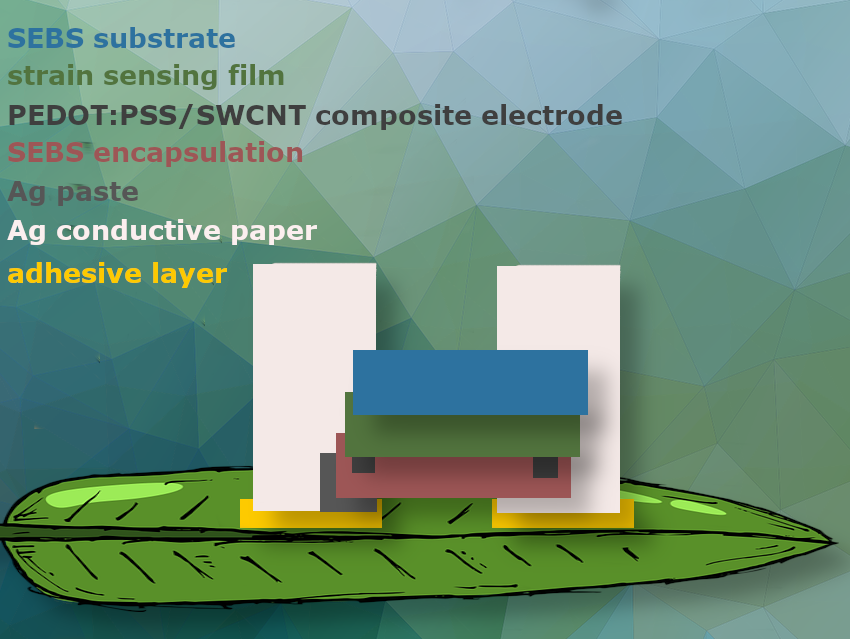Monitoring plant growth is essential in agriculture for resources optimizatio and disease detection, in biology for understanding plant behavior and characteristics, and in space agriculture for sustainable food production beyond Earth. Traditional plant growth measurement methods involve labor-intensive or destructive techniques like cutting, drying, and weighing plant tissues. Conversely, camera-based plant tracking technologies often require bulky and expensive instrumentation and infrastructure.
Ying Diao, University of Illinois at Urbana-Champaign, Urbana, IL, USA, and Beckman Institute for Advanced Science and Technology, Urbana, IL, USA, and colleagues have developed a highly stretchable polymer sensor that can monitor and transmit plant growth information without human intervention. Their Stretchable-Polymer-Electronics-based Autonomous Remote Strain Sensor, or short SPEARS2, is resistant to humidity and temperature, can stretch more than 400 % while remaining attached to a plant as it grows, and transmit a wireless signal to a remote monitoring site.
The strain sensor is super light (about 45 mg), highly transparent (transmittance = 98.7 %), environmentally stable (degradation rate = 0.0008 h−1), works consistently, and exerts negligible mechanical load and therefore no observable impact on plant growth. Combined with wireless technology, it can track plant growth from a distance. This helps researchers learn, e.g., more about how plants respond to light and darkness, which is difficult to study with other methods.
A sensor consists of a stretchable styrene-ethylene-butylene-styrene (SEBS) substrate, a strain-sensing film, a SEBS encapsulation layer with electrodes for electrical connection, along with silver paste, flexible silver wires, and an adhesive layer (pictured). The encapsulation layer completely encapsulates the electrode while allowing electrical contact with the sensing film and silver conductive paper.
The team used PEDOT:PSS (poly(3,4-ethylenedioxythiophene) polystyrene sulfonate), a transparent conductive polymer as the conductive matrix because of its high conductivity, transparency, and good processability. However, PEDOT:PSS’s natural stretchiness is limited to around 10 %. To increase the strain-sensing range, the researchers added the fluorinated surfactant Zonyl, along with the ionic additives 1-ethyl-3-methylimidazolium bis(trifluoromethanesulfonyl)imide (EMIM:TFSI) and lithium bis(trifluoromethanesulfonyl)imide (Li:TFSI). These additives improve substrate wetting, weaken the Coulomb interaction between PEDOT and PSS, and thus increase the size of the conductive PEDOT domains while making the PSS matrix more flexible.
So far, the resarchers have used their sensor with plants such as corn, which grow primarily upward. They aim to advance their electronics printing methodology to develop a system that can monitor upward and outward plant growth.
The study details some of the early results of a NASA grant awarded to Ying Diao to investigate how portable printed electronics can be used to enable farming in space, allowing astronauts to grow vegetables sustainably during long missions.
- Highly stretchable, robust, and resilient wearable electronics for remote, autonomous plant growth monitoring,
Siqing Wang, Bindu Edupulapati, Jackie M. Hagel, Justin J. Kwok, Jennifer C. Quebedeaux, Azzaya Khasbaatar, Janice M. Baek, Daniel W. Davies, Kavinraaj Ella Elangovan, Raymond M. Wheeler, Andrew D.B. Leakey, Curtis W. Hill, Kosta A. Varnavas, Ying Diao,
Device 2024.
https://doi.org/10.1016/j.device.2024.100322


